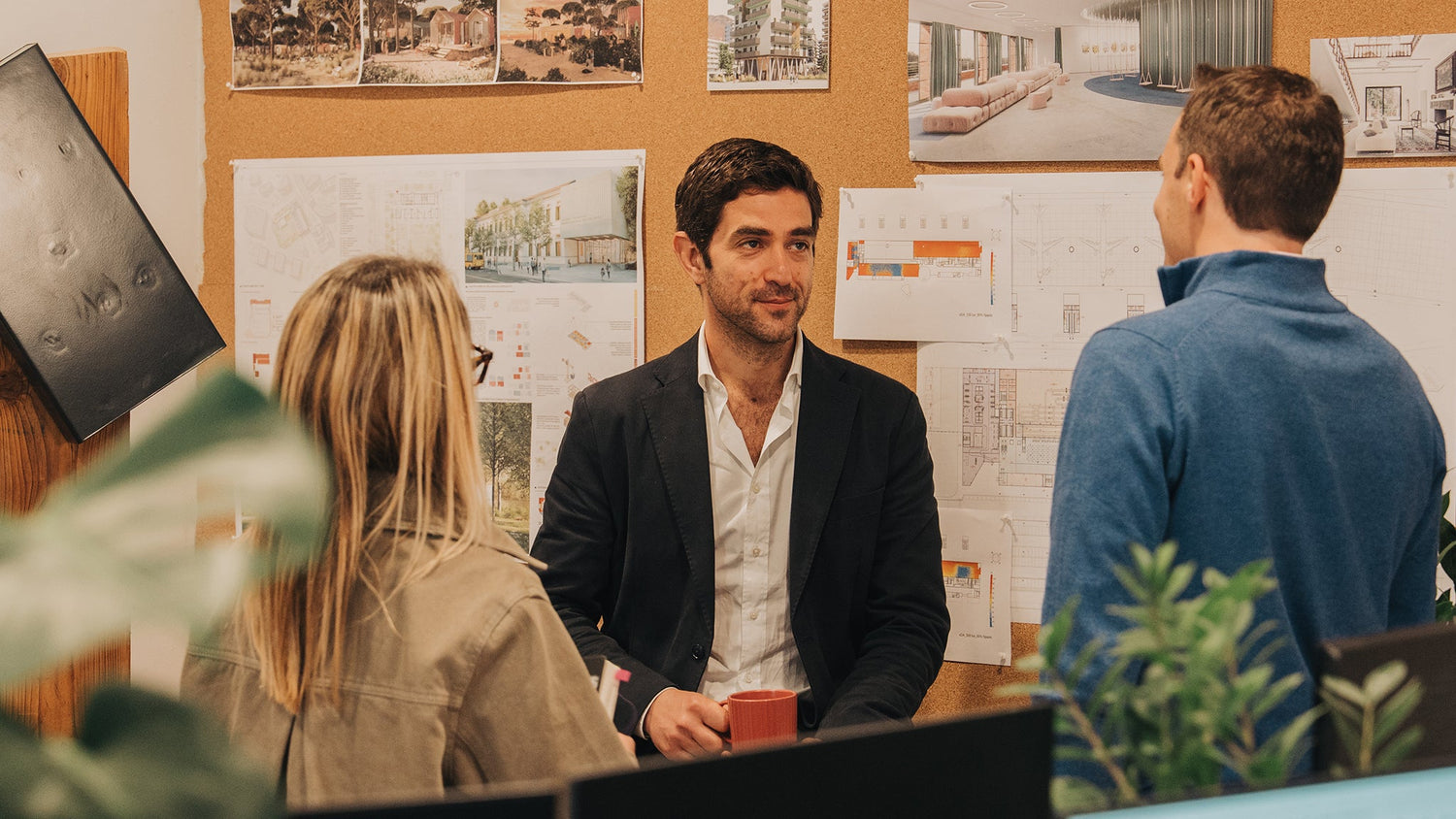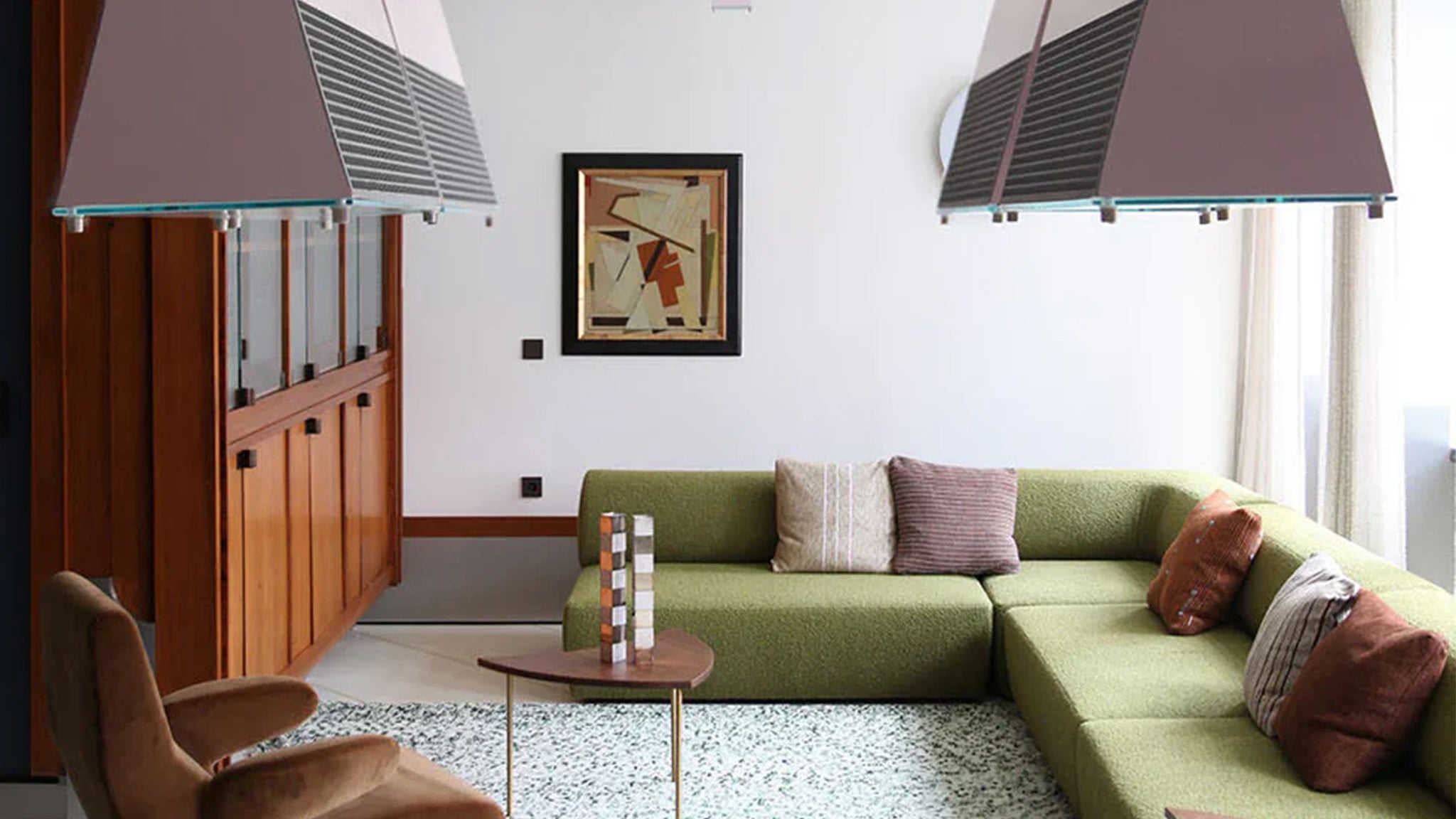Founded in Florence by Filippo Weber, Weber Architects combines technical rigor and design sensitivity , placing sustainability at the center of its action. After graduating in Civil Engineering-Architecture and a master's degree in Environmental Design at the Architectural Association in London, Weber gives shape to a path begun over ten years earlier, matured through professional experiences in national and international contexts.

The philosophy of the studio is based on the claim “ We build responsibly ” which sums up a concrete design commitment: each intervention is designed to generate well-being, reduce environmental impact and respond to contemporary living and building needs . Attention to energy consumption, air quality, natural light and eco-friendly materials are the guiding parameters of each process.
With a team of ten professionals, Weber Architects operates on a national scale, tackling projects of different nature and complexity . Among the most significant interventions: the New Ecodistrict Bertalia - Lazzaretto in Bologna, the Ex Manifattura Tabacchi in Turin, the third tower of the Tuscany Region in Florence. Alongside these, the studio also develops custom residential projects, such as villas and penthouses, always maintaining an integrated approach that blends architectural vision, technical expertise and a sustainable approach.
 Former Tobacco Factory - Turin
Former Tobacco Factory - Turin
A constant dialogue with clients, public bodies and project partners allows the studio to shape quality, responsible and long-lasting solutions , capable of responding coherently to the challenges of contemporary architecture.
What are the passions that accompany you in your everyday life and how do they influence your way of designing?
"The attention that this studio has for low environmental impact projects comes from my passion for nature at 360°. My greatest passion, which I practice in my free time, is sailing, therefore the sea. Evidently the idea of being able to try to reduce the impact on ecosystems in a broad sense with my profession is something that fascinates me a lot. During one of the last trips I took, to Argentina and Chile, I saw with my own eyes the largest glaciers in the world melting and I thought that probably my children will not see them when they are adults. Climate change is a topic that worries us and that guides us in our everyday profession. When we talk about sustainability in our work we do so because we believe that it is an urgent need for architecture in our time. If the Romans invented the arch and were able to build aqueducts, if in the nineteenth century the introduction of steel into the world of construction allowed greenhouses and large stations to be built, while reinforced concrete allowed Mies Van Der Rohe and Le Corbusier to create the open space, today we have to design to respond to the climate emergency and as architects we can do it and that's what we try to do. "
 Ecodistrict Bertalia - Lazzaretto, Bologna
Ecodistrict Bertalia - Lazzaretto, Bologna
You mentioned travel, so I ask you: is there a place that has particularly inspired you in your career as an architect? Furthermore, as an architect to another, I also ask you: is there a detail, a material or an architectural solution discovered while traveling that you have then used or reinterpreted in one of your projects?
"The beauty of traveling is that you can first of all discover beautiful contemporary architecture, which we are used to seeing in magazines, and have the opportunity to see it again in person, understand it and realize that it is often different from how we have idealized it through their photographic representation. However, I believe that the most interesting part of traveling is understanding diversity, places and cultures . For my profession in particular, it is interesting to discover how the various peoples and regions of the world have responded over time, in a very intelligent way, to the specificities of their places and their climate. Each trip therefore becomes an opportunity to delve into the need to create architecture that understands the context , sometimes also reinterpreting elements of the past, always in a contemporary key, to give a specific and not global response to architecture.
We work mainly in Italy, but a project we do in Southern Italy cannot be the same as a project we do in Florence, nor in the North. The specificities of the climate and the places are very different and consequently the design solutions must be different: different openings, different ways of naturally cooling, different ways of heating, if necessary, but in the most natural way possible. For example, many architectures in the subtropical zone are in some ways architectures without walls, because it is the ventilation that passes through the walls that gives comfort to the environments. In conclusion, let's say that in each trip I collect a piece of knowledge and I build this puzzle of information and sensitivity to tackle different projects each time, which ultimately means understanding how to interact with the external environment to create a comfortable internal environment. "
 Villa - Punta Ala
Villa - Punta Ala
Staying on interests collateral to the profession, is there a book – not necessarily about architecture – that has influenced your way of seeing the world?
" There is no book that has influenced me so much, but I can say that “ The Fountainhead ” by Ayn Rand was a book that fascinated me a lot and that accompanied me in the early years of my profession. It tells the story of this visionary architect, perhaps not completely understood at the beginning, who however has a fire inside not only towards his beloved, but also towards architecture, which pushes him to become a famous architect. Evidently the fact that it was also confused with a love story in my youth certainly made me appreciate it more. It certainly reflected a moment in my personal and professional life. "
What do you think is the biggest challenge for an architect today?
"I believe that we are setting up and building, on each project, a way of responding differently to the architectural project. As much as the forms of architecture are changing — with parametric design, computation design and new construction techniques — I believe that we still build and design with a mindset from the early twentieth century, a hundred years old.
Today we have to design according to a different concept of architecture that is not only an aesthetic concept, but a technical-functional concept, a performance concept , and it is this need that we try to use as a driver to generate new concepts of architecture . We do not see this as a limit to design but as a tool for creativity.
For example, we are rediscovering that the sun can be a guide for the design of architecture and its interior spaces , in the same way the wind, while the skin of the building is a transitory element that not only defines the interior, but also defines the exterior and therefore the microclimate of the external spaces. This is how the design process is enriched with elements and in our opinion generates architectures that are much less self-referential than many others that we see today.
 Penthouse - Florence
Penthouse - Florence
Today we often talk about urban regeneration but we do projects that are still very self-referential, while for us it is absolutely essential that the project also has an impact on the social level , as in the case of the Bologna project for social housing and the creation of a community. I believe that a building today must also give added value to the surrounding environment and for us it is a reason for strong research and a space for creativity."
 Ecodistrict Bertalia - Lazzaretto, Bologna
Ecodistrict Bertalia - Lazzaretto, Bologna
Florence is a city with a great artistic and architectural tradition: what is a place less known to the general public that you would recommend visiting? Or, if you had to tell the story of Florence through a building or a hidden corner, which would it be and why?
"I just returned from three days in Venice for The Plan 's forum entitled “ Perspective ”, where we discussed the circular economy and, among other things, hybrid spaces. I believe that in Florence, more than a building, it is the very structure of the city that has a fundamental value . What has been completely forgotten in its most modern expansions is precisely the creation of hybrid spaces in public spaces. All the Medici palaces on the ground floor were meeting spaces , therefore public spaces, which were certainly closed at certain times, but they were still spaces for the city.
 White Room, Pitti Palace - Florence
White Room, Pitti Palace - Florence
The Ponte Vecchio itself was a bridge that connected two banks of the city, but it was also a space of trade, so the value of the city of Florence, shaped by the Medici, was to create a city for the Florentines in its various parts.
Unfortunately, this is no longer the case today, but it is still a model to look at when designing the city of the future and the buildings of the future, which are pieces of the city.
We need to think about the citizens, how they move, possibly on foot or by bicycle, and Florence is potentially the city of "10 minutes on foot" . This is where the wealth of our city lies: made up of so many buildings, so many interesting corners but it is precisely in the very conformation of the city that the wealth is created that makes Florence a place known throughout the world."





